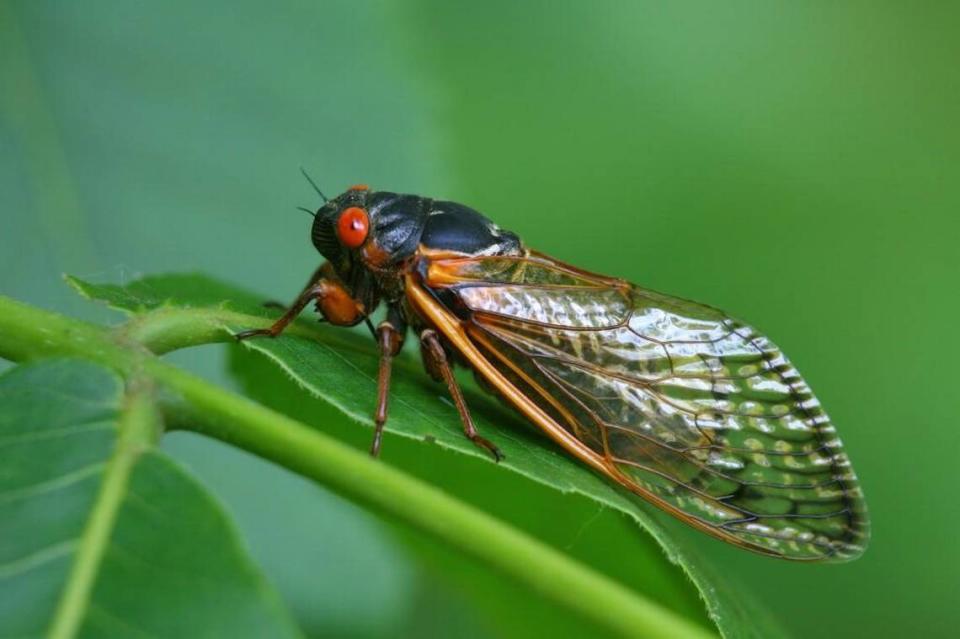How will this year’s army of Brood X cicadas affect NC? Here are tips and ... recipes
After 17 years, millions of Brood X cicadas will tunnel their way to the surface and sing their rowdy mating song — a plague of love-struck bugs.
This year, the tens of millions of red-eyed critters will return after patiently sucking the fluid of plant roots since their last appearance in 2004, when Triangle scientists forecast “an amazing dome of noise.”
For all but enthusiasts, cicadas make for a mess of bug bodies and a racket worse than a leaf blower.
Here’s a guide to the insects, including how to cook them if you’re so inclined.
Will I see cicadas?
Probably not, unless you’re mountain-bound.
The Triangle doesn’t show up on the Brood X map. This particular cohort of subterranean bugs surfaces in the western counties — mostly in North Carolina’s extreme northwest and southwest corners. While the brood splotches across the East Coast map, stretching into parts of Illinois and Georgia, it’s concentrated around Washington D.C.
The Triangle’s next big cicada show is set for 2024, when another 13-year-brood pushes out of the ground.
“In three years, they’re going to be everywhere,” said Clyde Sorenson, N.C. State University entomologist.
Brood X is coming: Millions of cicadas to re-emerge in parts of Georgia this spring
Are cicadas harmful?
They may look a lab experiment gone wrong, but cicadas pose no threat to humans. They don’t bite. They don’t sting.
They will bother a dog’s tummy if he eats the carcasses, and they might clog a pool.
But be on the watch for copperheads, which, as the Atlanta Journal-Constitution notes, love to feed on cicada larvae.
How to spot and correctly identify North Carolina’s six venomous snakes
What about other cicadas?
North Carolina has six different broods whose territory fit together like a jigsaw puzzle, Sorenson explained.
The 17-year crowd tends to be more Northern, while the 13-years hang to the South.

How do cicadas know when to come out?
By experts’ best guess, they count the years.
Underground, the bugs spend a dark and dismal existence sucking the fluids out of plant routes, keeping track of how many seasons have passed and emerging en masse once the soil is warm enough, National Geographic has reported.
Why 13 or 17? It’s unclear, but unique to these bugs.
Any more fun cicada facts?
Yes. You can eat them.
As with dogs, not too many.
But National Geographic provides instructions for deep-frying, sauce-slathered cicada snacks. (www.nationalgeographic.com/animals/article/130515-cicadas-recipes-food-cooking-bugs-nation-animals)
Also cocktails, served with gin and vermouth.
In Virginia, Bon Appetit provides advice for preparing them blackened with cheese grits. (www.bonappetit.com/uncategorized/article/how-to-cook-cicadas-according-to-3-richmond-va-chefs)
Is this the apocalypse?
No.
Sorenson, definitely in the cicada enthusiast category, isn’t putting himself out to see them.
“If I find myself in that part of the state, I’ll probably seek them out,” he said. “I probably won’t make any special trips.”

 Yahoo Movies
Yahoo Movies 
